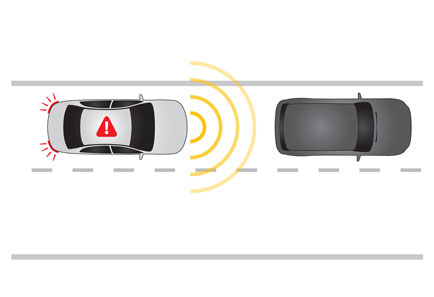Australasia’s leading independent vehicle safety advocate, ANCAP, announced findings of a study into the effectiveness of low-speed autonomous emergency braking (AEB) in reducing rear-end crashes. Findings from the research project jointly commissioned by ANCAP, the Department of Infrastructure & Regional Development and ANCAP’s sister organisation, Euro NCAP:
-Revealed low-speed AEB technology lead to a 38% reduction in real-world rear-end crashes; and
-Concluded that low-speed AEB needed widespread fitment for maximum benefits.
AEB is one of the more promising safety assist technologies that is becoming available on new cars – more commonly overseas than in Australia and New Zealand. The low-speed version – referred to by ANCAP as”AEB (City)” – usually consists of an automatic brake function that operates for speeds up to 30km/h or 50km/h. “Previous studies have predicted significant benefits from AEB technology in low-speed rear-end crashes and current research is now demonstrating its effectiveness,” said ANCAP Chief Executive Officer, Nicholas Clarke. “ANCAP and the Department, together with Euro NCAP, established an expert group of representatives across governments, industry, consumer and insurance organisations to determine the effectiveness of AEB in reducing real-world crashes.”
Data from five European countries and Australia was used with the findings showing a 38% overall reduction in real-world, rear-end crashes for vehicles fitted with low-speed AEB compared to a sample of equivalent vehicles without AEB technology. “These findings strongly support ANCAP’s push to have manufacturers fit AEB as standard across all new cars,” said Clarke. ANCAP is supported by all Australian and New Zealand motoring clubs, the Australian Government, the New Zealand Government, Australian state and territory governments, the Victorian Transport Accident Commission, NRMA Insurance and the FIA Foundation.

